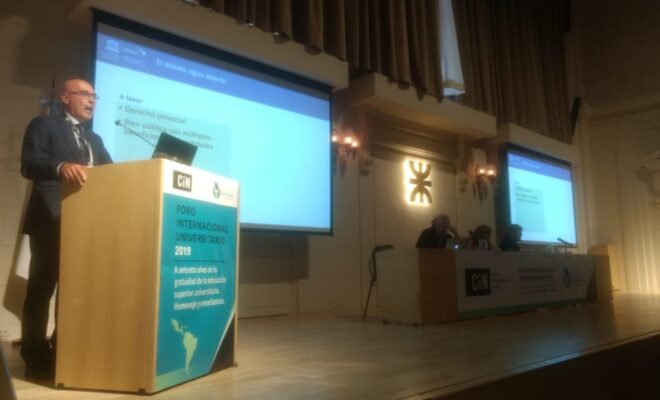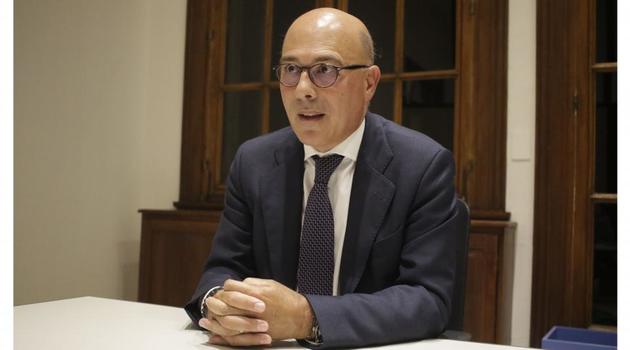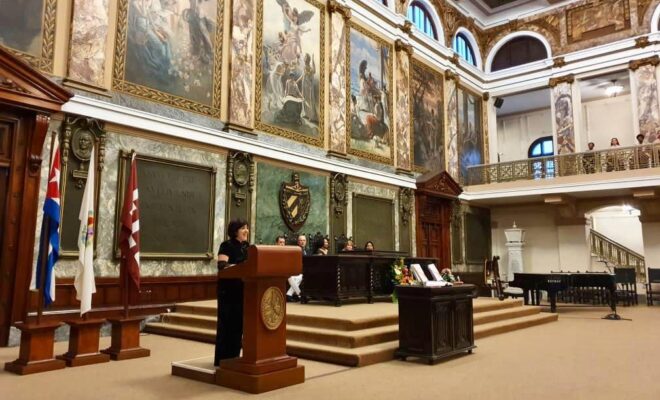IESALC presents international trends on university gratuity at the CIN forum


On September 9, 2019, experts on higher education (HE) participated in the international forum “Seventy years after the free university higher education. Tribute and teachings”, convened by the Consejo Interuniversitario Nacional CIN (National Interuniversity Council) of the country, which took place at the headquarters of the Universidad Tecnológica Nacional de Buenos Aires (National Technological University of Buenos Aires), Argentina.
The sociologist Aritz Recalde opened the morning session, focusing his presentation on the historical evolution of gratuity in Argentina, based on the 1918 reform and its transition to the 1949 amendment of the Constitution, which resulted in the establishment of gratuity by decree and the universalization of the education system. “In 1952 education became free from elementary to university, including tertiary education, which had a great social and cultural impact on the country. Today Argentina has a free system with a scholarship structure and student support. What it does not have is a full employment economy with a country development plan where everyone can participate. In a way it is still elitist”, he said.
Ernesto Villanueva, rector of the Universidad Nacional Arturo Jauretche (UNAJ), recalled in his speech that the Argentine university is the most internationalized in the region, however he invited to reflect on the relationship between number of students and number of graduates. “We are proud to have university gratuity, but per se it is not enough. We have outstanding debts in terms of scholarships and virtual education, as well as in the rate of graduates. We have to work on modifying the profile of our careers, their duration, and encouraging the study of careers related to science”, he said.
The university landscape in Latin America and the Caribbean opened the second session of the morning. The first intervention was in charge of Professor Delfina Veirabé, vice president of the CIN, who explained that the expansion of the enrollment has not been sufficient to reduce social inequalities, because there are factors that limit the performance of young people. “We propose multiculturalism as an objective of our universities. In Argentina we still have a long way to go in recognition of indigenous communities”, he said. He also rescued the legacy of the CRES 2008 and CRES 2018 regional higher education conferences as promoters of education as a human public asset, as well as regional agreements for the validation of studies and degrees as factors of regional integration.
Francisco Tamarit, general coordinator of the III Regional Conference on Higher Education (CRES 2018), participated in favor of the need to consolidate the Caribbean and Latin American cooperation space, which requires changes in universities and a more strategic vision of the solidarity cooperation in the transfer of knowledge and resources. “The commitment must be oriented to overcome inequalities. Policies must be strategically oriented towards the sustainable development processes (…) The region has been unable to generate a common university space allowing our universities to make knowledge an instrument capable of promoting the development and good living of their societies. It is not on the agenda of any government”, he said.
Juan Carlos del Bello, rector of the Universidad Nacional de Río Negro, presented specific cases of gratuitousness in LA, including Chile and Uruguay, as examples. “Gratuity implies a necessary condition but it is insufficient without good scholarship systems. Only a powerful scholarship system can improve the rate of access, permanence and graduation”, he concluded.

International trends on university gratuity
The UNESCO International Institute for Higher Education in Latin America and the Caribbean (IESALC) celebrates that gratuity has been maintained for 70 years in Argentina, making it a beacon country. “However, gratuity is not everything. Gratuity is in question in part of the world”, said Francesc Pedró, IESALC director, in regard to the global debate about university gratuity. “There are those who are in favor of gratuity, based on political arguments (education is a public asset, not exclusive and favors equal opportunities); and against it, because it generates inefficiencies and favors the most advanced social strata, subtracting resources that would end up to cover other needs of the less favored strata.A free map of the European region shows that not even in the more developed countries, is higher education free. “There are few countries in Europe where students do not pay fees: It is barely established in 40% of the countries of the world, even in public institutions, there is a registration fee or a fee that covers, in most cases, between 10 and 80% of the cost”. In this sense, according to the IESALC study, the abolition of gratuity has been more frequent in recent years than its promulgation, but the debates it generates remain on the political agenda of many countries. “The Philippines and New Zealand have proclaimed gratuity in the last 10 years, while Canada and Chile have developed selective gratuity policies”, said Pedró.
In addition to the fact that the costs for the provision of HE have grown throughout the world, the gratuitousness of HE has to compete with priorities that have benefits which are more evident to the common citizen, such as preschool education, public health or pension systems in a context of progressive aging of the population. Another trend is the link between gratuity and family income, this operation is based on solid tax systems.
In summary, the IESALC stands out in its presentation on the subject: the fulfillment of the universal right to higher education is a desirable and plausible political objective. Gratuity is a political option with high financial costs but with almost immediate effects. Gratuity, by itself, is not enough. Policies that introduce or recover enrollment fees or tariffs can improve the financing of institutions, and the system as a whole, but do so at the cost of creating access barriers; to be effective, it must be accompanied by public policies that address inequalities at the starting line, long before reaching the doors of higher education; The commitments for the universal right to education must translate into greater public investment so no one be left behind.
RELATED ITEMS








